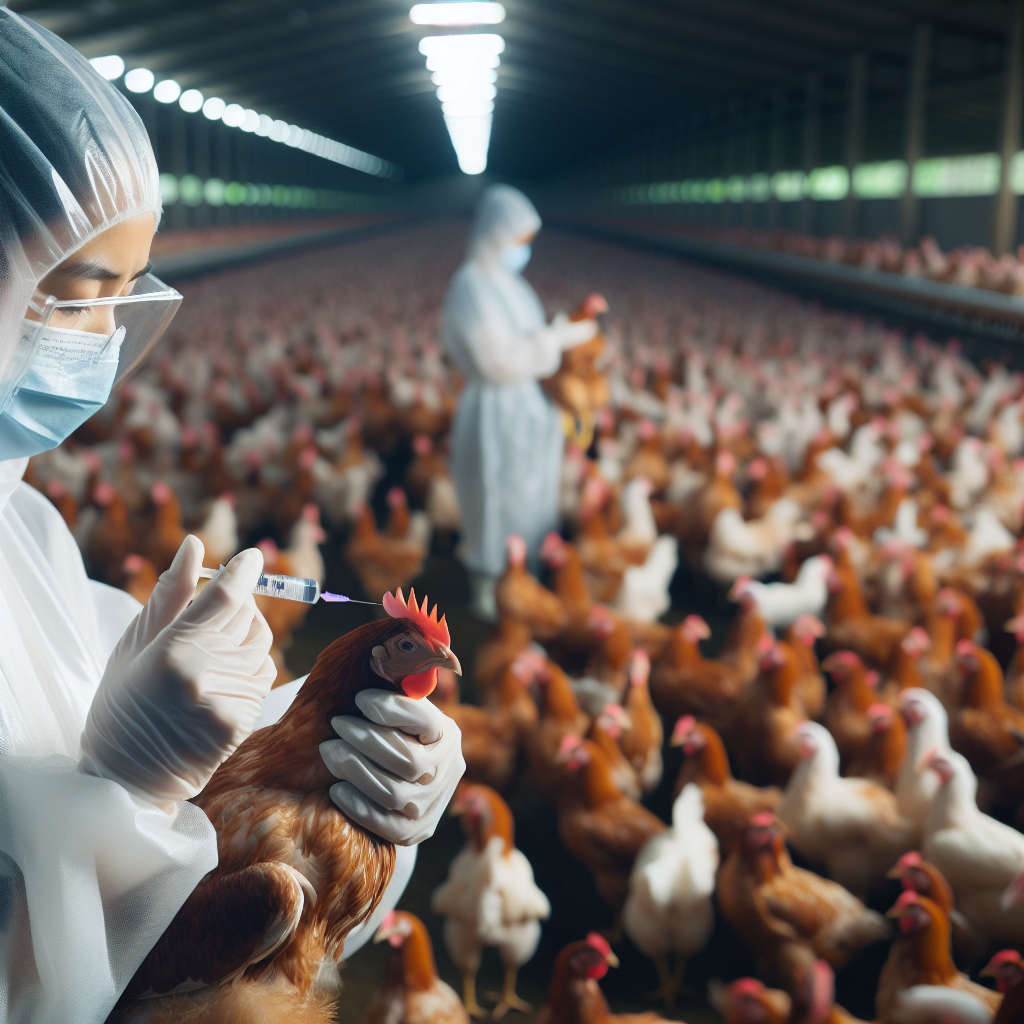In this article, we will explore the fascinating connection between regional regulations and feed sourcing, and how they influence the diet of chickens. By examining the various rules and guidelines imposed at a regional level, we can uncover the intricate ways in which these policies shape the sources and ingredients that go into the production of chicken feed. From restrictions on certain additives to requirements for sustainable sourcing, regional regulations have a significant impact on the nutritional composition and overall quality of the diet consumed by chickens. Join us as we unravel the complexity behind these regulations and their effects on our feathery friends’ well-being.
Impact of Regional Regulations on Feed Sourcing
Overview of regional regulations
Regional regulations play a vital role in guiding and governing the sourcing of animal feed in a specific area. These regulations are put in place to ensure the quality and safety of feed, as well as to support sustainable sourcing practices. They help create a framework that farmers and industry stakeholders must adhere to when it comes to feed production, ingredients, additives, and safety measures.
Importance of regional regulations in feed sourcing
Regional regulations are of utmost importance in feed sourcing as they create a standardized system that ensures the quality and safety of animal feed. These regulations set minimum standards for feed production, ingredients used, labeling requirements, and the use of additives. By having guidelines in place, regional regulations help protect animal health, prevent the spread of diseases, and safeguard consumer safety.
Effect of regional regulations on feed availability
Regional regulations have a significant impact on the availability of feed. They may restrict or prohibit the use of certain ingredients that are deemed unsafe or not suitable for animal consumption. For example, certain regions may have regulations in place that limit the use of genetically modified organisms (GMOs) in animal feed. This can restrict the availability of certain types of feed, forcing farmers to explore alternative options or adapt their farming practices to meet the regulatory requirements.
Impact of regulations on feed additives and ingredients
Regional regulations govern the use of additives and ingredients in animal feed. These regulations dictate which additives are allowed, the concentration limits, and any labeling requirements. The goal is to ensure that feed additives are used in a safe manner and do not pose a threat to animal health or human consumption. By having these regulations, the use of harmful substances can be prevented, protecting both the animals and the consumers.
Role of regional regulations in ensuring feed safety
Regional regulations have a crucial role in ensuring the safety of animal feed. They establish guidelines for good manufacturing practices, feed labeling, storage, and transportation. These regulations include regular inspections and audits to verify compliance with the set standards. By enforcing these regulations, the risk of contamination, adulteration, and the presence of harmful substances in animal feed can be minimized, ensuring the overall safety of the feed.
Challenges faced by farmers due to regional regulations
Farmers often face challenges and adjustments in their farming practices due to regional regulations. These regulations may require farmers to source feed from specific suppliers or regions, limiting their options and increasing costs. Farmers may also need to modify their farming practices to meet the regulatory standards, which can require additional investments or changes to their established routines. These challenges can pose financial and operational burdens on farmers, especially small-scale or less-resourced operations.
Influence of regional regulations on feed cost
Regional regulations can have a significant influence on feed costs. The requirements set forth in these regulations, such as the use of specific ingredients or additives, can impact the overall availability and cost of feed. If certain ingredients or additives are restricted or prohibited, alternative options must be sought, often at a higher price. Additionally, the compliance costs associated with meeting the regulatory requirements are passed on to the farmers, which can further impact feed costs.
Role of regional regulations in promoting sustainable feed sourcing
One of the key roles of regional regulations is promoting sustainable feed sourcing practices. These regulations guide the sourcing of feed ingredients, encouraging farmers to utilize locally sourced and sustainable options whenever possible. By having regulations in place, regions can support the use of environmentally friendly feed sources, reduce carbon footprints, promote ethical sourcing, and contribute to overall sustainability goals.
Examples of successful implementation of regional regulations
Several regions around the world have successfully implemented regional regulations in feed sourcing. The European Union, for example, has established regulations known as the “Feed Hygiene Regulation,” which sets out rules and standards for feed production, labeling, and approval procedures. This regulation has helped strengthen feed safety and ensure compliance with quality standards. Similarly, countries like Canada and Australia have implemented their own feed regulations, focusing on safety, traceability, and the prevention of disease outbreaks.
Future implications of regional regulations on feed sourcing
As the focus on food safety, sustainability, and animal health continues to grow, regional regulations on feed sourcing are likely to become even more stringent. Future implications may include increased requirements for traceability, stricter regulations on the use of certain ingredients or additives, and a greater emphasis on sustainable sourcing practices. However, with advancements in technology and greater collaboration among industry stakeholders, regional regulations can lead to a safer, more sustainable, and transparent feed sourcing system.
Effect of Regional Regulations on Chicken Diet
Understanding the connection between regulations and chicken diet
Regional regulations have a direct impact on the composition of chicken diet. These regulations determine the types of ingredients and additives that can be used in feed, which in turn affects the nutritional value and balance of the diet. By regulating the feed components, regional regulations aim to ensure the optimal health and productivity of chickens while maintaining consumer safety.
Variations in chicken diet due to regional regulations
Regional regulations can lead to variations in chicken diet across different areas. These regulations may restrict the use of certain ingredients, such as antibiotics or growth-promoting substances, forcing farmers to seek alternative options. Additionally, regulations on GMOs or pesticide residues in feed may also impact the availability and composition of chicken diet. These variations in diet can have subtle differences in nutrient content, taste, and overall quality, which may influence the eating habits and preferences of chickens.
Importance of balanced diet for chickens
A balanced diet is crucial for the health and well-being of chickens. It provides the necessary nutrients, vitamins, and minerals that are essential for growth, immune function, and overall productivity. A well-balanced diet ensures that chickens receive the right proportions of proteins, carbohydrates, fats, and other essential nutrients. It contributes to the development of strong bones, feathers, and muscle mass, and supports optimal egg-laying and meat production.
Impact of regulations on feed quality and nutritional value
Regional regulations have a significant impact on the quality and nutritional value of chicken feed. These regulations ensure that feed manufacturers adhere to specific standards in terms of feed composition, labeling, and production practices. By enforcing these regulations, the overall quality and nutritional value of the feed can be maintained, providing chickens with the necessary nutrients for optimal health and productivity.
Effect of regional regulations on feed composition
Regional regulations dictate the composition of chicken feed, including the types and concentrations of ingredients used. These regulations can restrict or prohibit the use of certain additives or substances that are deemed unsafe or have potential negative effects. For example, regulations may limit the use of antibiotics to prevent the development of antibiotic resistance in chickens or prohibit the use of certain animal by-products to reduce the risk of disease transmission.
Influence of regulations on chicken health and productivity
Regional regulations play a crucial role in protecting chicken health and promoting productivity. By setting standards on feed composition, labeling, and production practices, regulations help prevent the use of harmful substances or inadequate nutrition that can adversely affect chicken health. The regulations also aim to enhance productivity by ensuring chickens receive a nutritionally balanced diet that meets their specific needs at different stages of growth.
Role of regional regulations in preventing disease outbreaks
Disease outbreaks in chickens can have detrimental effects on the poultry industry and food security. Regional regulations on chicken diet play a pivotal role in preventing disease outbreaks. By regulating the use of certain ingredients, such as animal by-products or substances with potential disease-causing risks, regulations minimize the transmission of pathogens and reduce the risk of disease outbreaks among chicken flocks. This helps protect both animal welfare and consumer safety.
Challenges faced by chicken producers due to regional regulations
Chicken producers face several challenges due to regional regulations. These regulations may require changes in farming practices, adjustments to feed composition, and additional costs associated with compliance. Farmers must stay informed and updated about the latest regulations, invest in appropriate feed formulations, and often face increased costs for sourcing specialized feed ingredients that meet the regulatory requirements. These challenges can put financial strains on chicken producers, particularly small-scale operations.
Role of regulations in ensuring consumer safety
Regional regulations play an important role in ensuring consumer safety in relation to chicken products. By setting standards for feed quality, composition, and labeling, regulations help prevent the presence of harmful substances or contaminants in chicken meat and eggs. Additionally, regulations that restrict or prohibit the use of certain substances promote the production of safer and healthier food products for consumers.
Future outlook for chicken diet influenced by regional regulations
In the future, regional regulations are expected to place even greater emphasis on feed safety, animal welfare, and sustainability. There may be increased restrictions on the use of certain additives or ingredients, as well as requirements for improved traceability and transparency in the supply chain. As consumers become more conscious of the impact of their food choices, regional regulations will likely continue to evolve to meet their demands, leading to safer, healthier, and more sustainable chicken diets.




